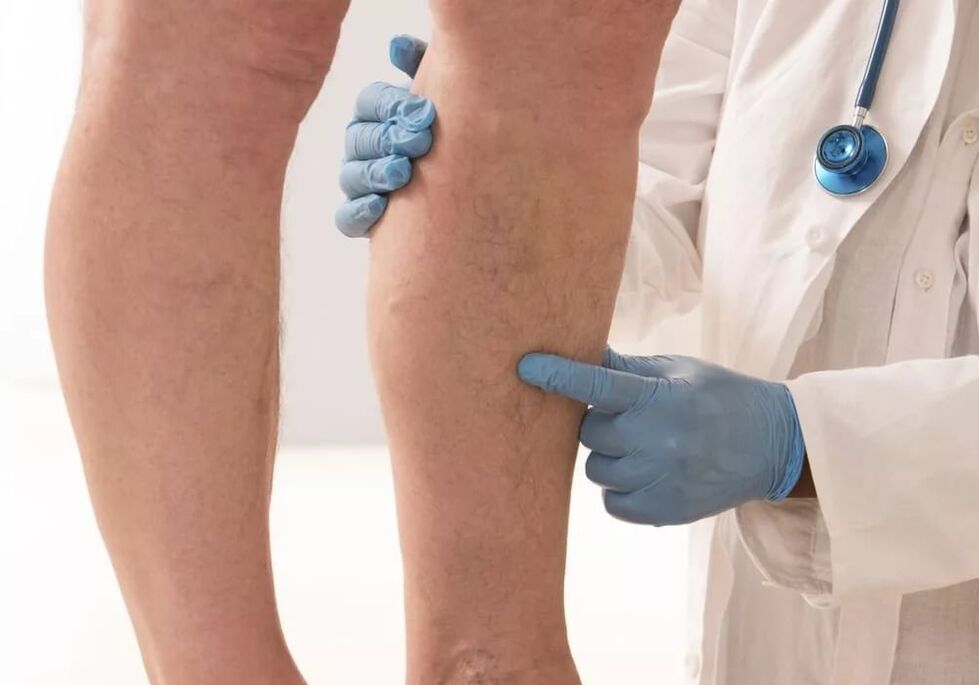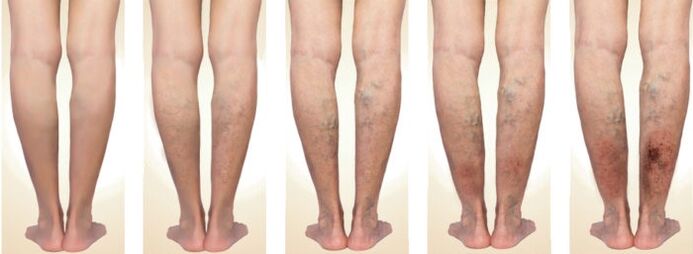Varicose veins, or varicose veins, are pathological changes in veins with their sac-like dilation, increased length, formation of convoluted and nodular tangles, resulting in valve failure and impaired blood flow. Varicose veins are one of the most common blood vessel problems.

What are varicose veins?
Varicose veins are venous lesions based on invasion of the vascular valve device, resulting in venous insufficiency, lumen dilatation, hyperemia, and associated persistent mucus of the tissue.
main cause of pathology
Varicose veins in the legs have different causes and symptoms, with slight gender differences. The main common trigger for pathology is called congenital weakness of connective tissue. Second are hormonal changes, so women are more often diagnosed with varicose veins. Prolonged static sitting or standing will work, and the longer the legs, the worse the situation. The extra weight can also cause increased venous pressure in the lower extremities, as well as a lack of physical activity. Smoking, pregnancy, concomitant diseases, tight underwear, shoes, high heels, all factors that lead to stagnant blood circulation in the leg veins are risk factors for varicose veins.
Symptoms and clinical manifestations
There is no fundamental difference in the signs of leg varicose veins in women and men. It is a staged disease whose symptoms are related to the developmental stage of the pathological process.

The first stage is characterized by mild clinical manifestations: veins barely protrude from the skin surface, the dermis is slightly congested, the legs are heavy, and nocturnal cramping of the legs and ankles begins, with possible twitching. From an aesthetic point of view, this symptom of varicose veins is especially painful for women. Visual symptoms often precede pain.
In the second stage, the clinical presentation acquires a typical appearance: the leg veins bulge out of the skin surface, are palpable, and resemble nodules. If the pathological process progresses, the veins of the lower extremities are tortuous, blue-purple and sometimes black.
Symptoms of leg varicose veins in the third stage are manifested by the development of complications: nutritional disorders appear, the skin resembles parchment, swelling and cramping become common, the legs are covered with a rash, itching begins, secondary flora joins, pusCortex, dermatitis, eczema.
The fourth stage of varicose veins of the lower extremities is the most severe in terms of symptoms: the skin above the prominent vein becomes inflamed, nearby tissues are involved in the process, the trophic ulcer opens, the varicose veins are permanent and the leg pain is permanent, plus secondaryInfection causes thrombosis, thrombophlebitis, requires urgent hospitalization, and complicated treatment.
Which doctor should I contact?
Leg pain from varicose veins is handled by a phlebologist, but a vascular surgeon can also make an initial appointment. It all depends on the severity of the pathology. A phlebologist will prescribe conservative treatment or consult a vascular surgeon to decide on surgery.
An accurate diagnosis cannot be made without a complete clinical and laboratory examination. The instrumental diagnostic method helps to identify the pathological stage and the test duration is 10 minutes up to half an hour. Test results are announced by the doctor immediately at the first appointment. The choice of appropriate treatment depends on the pathological stage.
Treatment characteristics
The treatment of varicose veins relies on "three pillars": drug therapy, minimally invasive techniques, and classic surgery.
Conservative treatment
In addition to the mandatory general recommendations for varicose veins: dosage, regular physical activity, minimization of static loads on the legs, exercise therapy, wearing compression stockings, use of elastic bandages - conservative therapy includes the use of flavonoid-based diosmin and orange peelIntravenous injection of glycosides, horse chestnut extract.
In most cases, the intake is combined with the eponymous external therapy for varicose veins. According to doctors and patients, a combination of capsules and gels is the most effective.
Of course, you should not expect a complete cure from a conservative approach, drugs cannot restore dilated veins, but as a precaution, surgical treatment of varicose veins is not possible in preparation for surgery - these drugs are guaranteed to stop progression and relieve symptoms.
compression sclerotherapy
The essence of the minimally invasive technique used to treat varicose veins is to introduce a special drug sclerosing agent into the dilated vein. Through a syringe, a doctor injects a foam solution into a vein, filling the deformed blood vessel, causing it to spasm.
The patient wears compression stockings designed to keep the blood vessels in this state. Within three days, the walls of the veins stick together, and the vessels shut off from normal blood flow and become empty. You need to wear compression stockings for at least a month, sometimes two. Criteria for therapeutic effect - adhesions formed.
Compression sclerotherapy is performed if the varicose veins do not reverse blood flow from the deep vessels to the superficial ones through the communicating veins. If there is such a backflow, the efficiency of the program tends to zero.
Operation
Surgery has been and remains the most reliable and effective method of treating varicose veins, regardless of the presence or absence of reverse blood flow in the veins. But even here, it is important to consult a doctor promptly, as relapses usually occur at a later stage. Varicose veins are operated on using different techniques: microsurgery, radiofrequency and laser coagulation of deformed veins.
In the initial stage, laser photocoagulation or removal of spider veins is effective. In later stages, a phlebectomy - complete removal of the affected veins - is required. Surgery is invasive and carries a risk of complications, so today doctors are trying to use less invasive venuleectomy. Surgery is performed if the varicose veins are complicated by venous thrombosis, secondary infection.
How to treat leg varicose veins at home?
The essence of using folk remedies to prevent and treat varicose veins is to remove toxins from the body and restore normal blood flow. To do this, eat a balanced diet that includes cabbage, tomatoes, bell peppers, vegetables, citrus fruits, apples, peaches, cherries, cherries, strawberries, gooseberries, and black currants in your daily meals. Be sure to calculate the correct drinking diet: 40 ml per kg of body weight.
In addition, the properties of green tomatoes are used, which are tied in the area of varicose veins in a compressed form in the form of slices. The effect is guaranteed by lycopene - an antioxidant in the pulp that improves the structure of the walls of blood vessels, regulates the veins. You can try juice treatments: all raw vegetables are suitable.
Apple cider vinegar is generally considered a source of minerals and vitamins; for varicose veins, take by mouth morning and evening, dissolving two teaspoons of the product in a glass of water. Outward: Rub varicose veins with a cotton swab moistened with vinegar to reduce itching and pain.
The compress is made with honey, and a sterile napkin with the product is applied to the varicose vein area under the film for several hours. Use beaten cabbage leaves and vegetable oil under a bandage at night. The course is one month.
prevention
Varicose vein prevention has two goals: preventing the onset of the disease and reducing the number of recurrences. To do this: You can't go to a sauna or take a bath that's too hot, lift weights. It is recommended to exercise more, exclude strength exercise, control weight, and try to eat less spicy and greasy food.
No need to wear tights, socks, socks, elasticated stockings, sit cross-legged. Encourage women to ditch high heels.
Evening - take a cold water bath and pour cold water on your feet in the morning. To get rid of bad habits, master acupoint massage: stroking the skin of the lower limbs in the opposite direction from bottom to top for 10 minutes, minimize stress, avoid overheating, colds, and physical examinations.
With varicose veins, it's reasonable to go to the pool, take a walk, take a contrast shower at home, and wear compression stockings often.

















